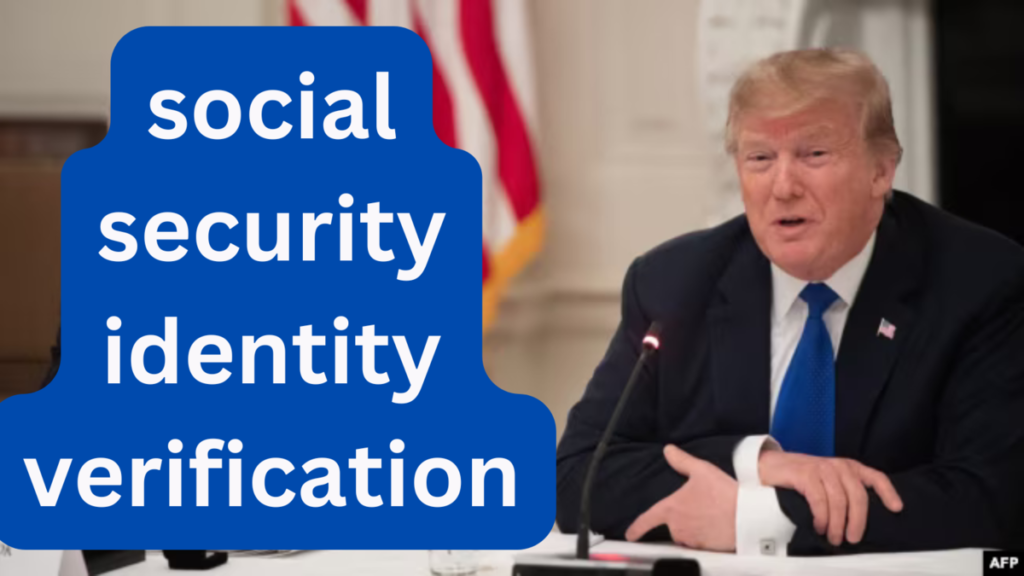Social Security Identity Verification: Major Social Security changes may limit identity verification options for millions, raising concerns among advocates. Learn how these reforms impact access to benefits and what it means for Social Security identity verification and Social Security news.
Big changes are coming to Social Security identity verification, and they’re raising eyebrows. Starting March 31, millions of Americans—especially seniors and people with disabilities—will no longer be able to verify their identity over the phone. Instead, they’ll have to go online or visit a Social Security office in person. The problem? Many of those offices are shutting down, and not everyone has access to reliable internet or the necessary technology.
Advocacy groups are worried. Will this make life harder for vulnerable populations? Will people lose access to benefits they rely on? Let’s break down what’s happening, why these changes are being made, and what it means for Social Security recipients.
The Big Change: No More Phone Verification
- Previously, Social Security recipients could verify their identity over the phone. This method was especially useful for older Americans and those with disabilities who struggle with online systems.
- Now, the government is shifting to online and in-person verification. But with over 40 field offices closing, this raises serious accessibility concerns.
- Who’s affected? Anyone who:
- Lacks internet access or isn’t comfortable using online services.
- Doesn’t have a smartphone or driver’s license for online authentication.
- Is a child or has a dependent who needs verification.
This shift is part of a broader effort to reduce fraud, but at what cost?
Why Is This Happening? Addressing Fraud vs. Accessibility
- From 2015 to 2022, fraudulent claims and improper Social Security payments totaled $72 billion—less than 1% of all benefits paid out during that time.
- The government argues that removing phone verification will help prevent identity theft and fraudulent claims.
- However, critics say it could create more barriers for people who genuinely need benefits.
Imagine an 82-year-old who’s never used a computer. Instead of making a simple phone call, they now have to navigate a website or travel to a distant Social Security office. It’s clear why advocates for seniors and people with disabilities are concerned.
Field Office Closures: A Major Hurdle
- The Department of Government Efficiency (DOGE) is shutting down over 40 Social Security offices, mainly in the South.
- At the same time, thousands of Social Security Administration (SSA) employees are being laid off.
- These closures will hit rural communities the hardest, where public transportation is limited, and many residents rely on in-person services.
The Impact of Office Closures
- Fewer staff means longer wait times. Currently, wait times for appointments already exceed a month in some areas.
- Studies show that when field offices close, fewer people receive the benefits they qualify for. Some may give up altogether.
- People needing Social Security identity verification may struggle to complete the process, delaying crucial benefits like retirement or disability payments.
For many, these closures feel like the government is cutting costs at the expense of its most vulnerable citizens.
Is There Any Good News? Faster Processing for Some Services
Not all the changes are negative. One improvement is that the government is expediting direct deposit updates:
- Previously, if you changed your bank account, it could take up to 30 days to process the update.
- Now, the process will be cut down to one business day—a significant improvement for those who rely on timely payments.
But there’s a catch: You must verify your identity online to access this faster processing. And that brings us back to the same issue—what happens to those who can’t?
The Bigger Issue: Underfunding and Staff Cuts
The root of these problems isn’t just policy changes; it’s years of underfunding at the Social Security Administration (SSA):
- Staffing shortages: SSA has lost thousands of employees due to budget cuts, and the Trump administration planned to cut 7,000 more.
- Longer wait times: Fewer workers mean longer delays for Social Security identity verification, disability claims, and basic customer service requests.
- Advocacy groups like AARP have called for increased funding to improve SSA services, arguing that more staff would lead to faster processing and better support for beneficiaries.
Without these resources, even the best-intended policy changes could end up hurting more than helping.
Conclusion: What This Means for Social Security Recipients
These Social Security changes highlight an ongoing challenge: balancing fraud prevention with accessibility. While the government aims to improve security, these shifts could create unnecessary hurdles for millions of Americans—especially older adults, people with disabilities, and those without easy access to technology.
So, what can you do?
- If you or someone you know relies on Social Security benefits, make sure to set up an online account as soon as possible.
- If you need in-person verification, book an appointment early to avoid delays.
- Stay informed by following Social Security news updates and advocating for policies that prioritize accessibility.
The future of Social Security depends on making sure everyone—not just the tech-savvy—can access the benefits they’ve earned.
